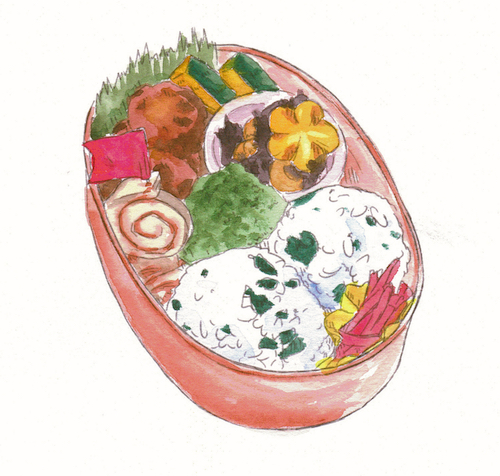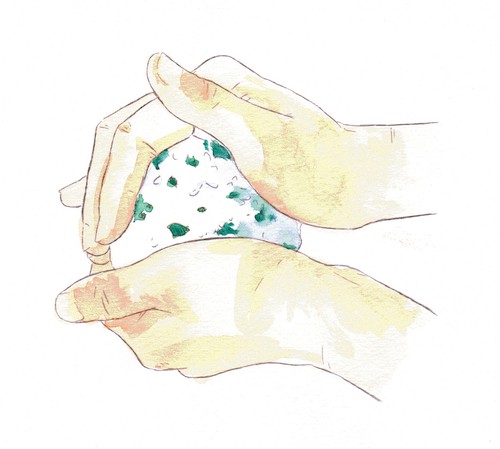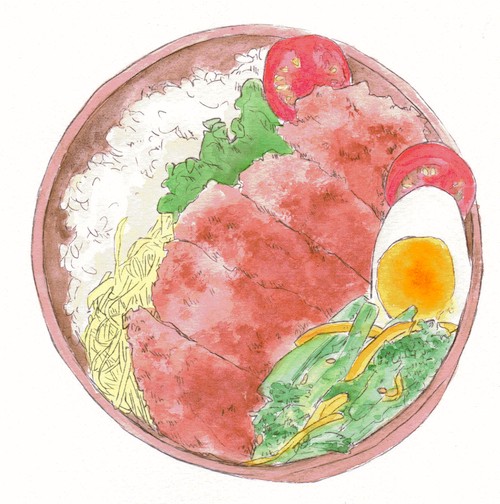
They’re healthy, easy to make, and easy to eat
I was on the phone with my friend, and she was talking about how she was struggling with her extra weight and the latest diet she’d been undertaking to lose it. She was growing fearful, as it wasn’t just about self-confidence anymore, but also about the serious health complications that come with being overweight.
“But it’s so hard you know… I’m so busy and stressed, and fast food is such an easy answer to my problems. I’ve been replacing my usual takeout with salad bowls and it was great the first few days, but I don’t know how much longer. I’m entering Day 10, and you just get really sick and tired of eating lettuce all the time. Fast food is either bad for you, or tastes boring! I wish there was something new,” she sighed.
I tried to cheer her up, “Come visit me in Japan! The convenience foods here are so great, and they actually helped me lose weight, a lot of it when I wasn’t paying any particular attention. I wish they had bento boxes in America too because I can eat well yet have delicious food.”
After our call, she messaged me a photo of an American ‘bento box’ she saw at her local eatery — “Look what I found! 😋” her text read. I was excited at first, thinking she’d show me something with rice, grilled fish, and a carefully packed assortment of colorful vegetables. Instead, when I opened the photo it looked like this:

Hmm, not exactly what I had in mind.
Convenience redefined
While the bento box has been around forever, it has evolved from centuries ago to house more than just packed rice — and now includes fish, vegetables, and pickles to mimic the kind of teishoku-style meal you would find served at home or in a restaurant. It became tradition for families to make these lunches early in the morning, to be taken to work or school for the day — a convenient way to enjoy a well-rounded meal, in just one small box. Now bento boxes are widely available for purchase at a variety of restaurants, train station vendors, and supermarkets, and range from being packed with the traditional Japanese “okazu”, or side dishes, and rice, to bread and pasta with other cuisines.

A healthy meal
The idea behind a bento box is beyond a simple takeaway lunch because it is not just about convenience but it is also about being well-rounded and balanced. Although it is just one box, it is designed to have a complete meal inside — usually composed of about 40 percent rice, 30 percent meat or fish, and 30 percent vegetables, the same composition as a traditional Japanese meal set you’d find at a restaurant or made at home.
Bento boxes aren’t necessarily healthy because of the food they contain — many contain fried chicken, creamy potato salads, and thick sweet sauces, foods traditionally deemed “unhealthy” — but they are healthy because of the way these foods are balanced together. Never is a bento box just white rice and fried chicken, but it will more often than not also contain a variety of grilled or steamed vegetables, fresh tomatoes or salad leaves, and pickles to complement the meal. Packed into one box, you end up not even eating that much fried chicken or white rice because there are so many other side dishes to enjoy too.
While in the U.S., the championed healthy takeaway meals tend to be big salad or grain bowls that only contain “healthy” foods, these takeout options tend to taste repetitive and aren’t sustainable for the long term. In Japan, “healthy” meals tend to be built around ideas of moderation and variety, to include a colorful variation of food types and flavors, rather than a strict categorization of “good” and “bad” foods to eat.
This is what makes bento boxes so popular. They are not just convenient to purchase and eat like fast food is, but they are complete healthy meals with infinite variations. Not too much of any one thing, individuals are able to eat the foods that they love, such as fried chicken or a creamy potato salad, in moderation paired with whole vegetables in a variety of seasonings and flavors. They are nutritious and filled with our favorite foods, so anyone can enjoy it, every day of the week.

How to make healthy bento boxes
Bento boxes are traditionally rice, grilled fish, vegetables, and pickles, but there are other ways to prepare a balanced and healthy bento box. It’s also very easy, and all you would really need to be mindful of is the proportion of carbohydrates, to protein, to vegetables. Here are some guidelines to begin:
- Have a proper box. You can use normal Tupperware, or you can choose to use a specific bento box with many small compartments. I recommend something microwave safe!
- Bulk prep rice, or grain of choice. These tend to be very easy to make in large quantities and last a while in the fridge so it’s good to always have some on hand.
- Bulk prep the “okazu” or side dishes, often using leftovers from the day before — instead of making these side dishes early every morning, be comfortable with reusing what you had the day before, to repack into a bento box. This will be key to saving time and stress. Mix and match, and design boxes depending on what you have already.
- Instead of worrying about making side dishes that eliminate sugars, fats, or carbs (which are unsustainable strategies to focus on anyways when thinking about healthy eating) focus on your meal ratio — Traditionally, it is about 4:3:3, 4 parts carbohydrates, 3 parts protein, 3 parts vegetable, but work with what you know you’ll enjoy best.
Bento boxes show that convenient food and healthy food can still go hand in hand. With proper foresight and a bit of preparation, we don’t need to rely on fast food or take out meals to have convenient healthy meals. Instead of stressing over the small details of foods to eat and foods not to eat, by focusing on balance and enjoying everything in moderation, we simplify the process of easy and healthy eating.
I ended up messaging my friend back, “Hey, try checking out the #弁当 tag on Instagram. This is more of what I was talking about!”


If you enjoyed this piece or have further questions, email me at kokumura@kakikata.space! I would love to hear from you, and share some of my favorite recipes for Japanese okazu 😊 Warm regards, Kaki